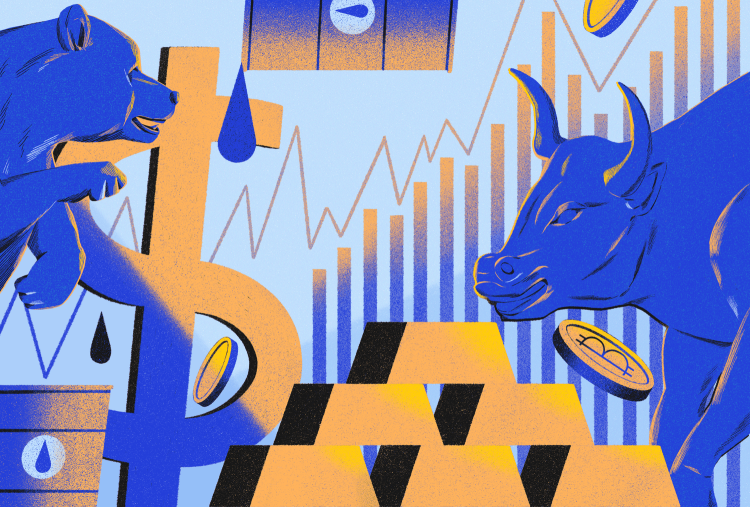The Dow Jones Live Ticker: Understanding Its Significance and Functionality

co-founder of Dow Jones & Company, it serves as a barometer for the health of the U.S. economy and the stock market. In this article, we will delve into the workings of the Dow Jones live ticker, its significance in financial markets, and how it impacts investors and the economy.
Table of Contents
Toggle1. What is the Dow Jones Industrial Average?
The DJIA is a stock market index that represents 30 large publicly traded companies in the United States. These companies are leaders in their respective industries and are considered bellwethers for the U.S. economy. The index is price-weighted, meaning that companies with higher stock prices have a greater influence on the index’s performance. The DJIA is calculated using the following formula:
DJIA=Sum of the stock prices of 30 companiesDivisor\text{DJIA} = \frac{\text{Sum of the stock prices of 30 companies}}{\text{Divisor}}DJIA=DivisorSum of the stock prices of 30 companiesThe divisor is adjusted for stock splits, dividends, and other factors to maintain the continuity of the index over time.
2. The Role of the Live Ticker
A live ticker is a continuously updated display of stock prices and market information. For the Dow Jones, a live ticker shows real-time updates of the index’s value, along with the performance of the individual stocks that make up the index. The ticker provides essential information, including:
- Current DJIA Value: The real-time number reflecting the DJIA’s value at any given moment.
- Price Changes: The daily change in points, indicating whether the index is up or down from the previous close.
- Percentage Change: The percentage increase or decrease in the index’s value.
- Component Stocks: The live prices and performance of the individual stocks within the DJIA.
The live ticker is crucial for investors, traders, and market analysts as it enables them to track market movements and make informed decisions.
3. Why is the Dow Jones Important?
The Dow Jones Industrial Average is significant for several reasons:
- Market Sentiment: The DJIA is often seen as a reflection of market sentiment and investor confidence. A rising DJIA typically indicates optimism about the economy, while a falling index may suggest concerns about economic stability.
- Economic Indicator: The DJIA serves as an economic indicator, providing insights into the health of various sectors, including technology, healthcare, finance, and consumer goods. Policymakers and economists closely monitor the index to gauge economic trends.
- Investment Decisions: Many investors use the DJIA as a benchmark for their portfolios. Investment funds, such as exchange-traded funds (ETFs) and mutual funds, may track the DJIA, making it a critical reference point for performance evaluation.
- Media Coverage: The DJIA is widely covered in financial media, influencing public perception and investment strategies. News outlets report on significant movements in the index, often linking them to economic events or geopolitical developments.
4. The Mechanics of the Live Ticker
The functionality of the Dow Jones live ticker is rooted in technology and financial infrastructure. Here’s how it works:
- Data Sources: The live ticker aggregates data from various stock exchanges, including the New York Stock Exchange (NYSE) and NASDAQ. This data includes real-time stock prices, trading volumes, and other relevant market information.
- Data Processing: Advanced algorithms process the incoming data, calculating the current DJIA value and its constituent stock performances. This process occurs in fractions of a second, ensuring that the ticker provides real-time information.
- Distribution: Once processed, the information is distributed to various platforms, including financial news websites, trading platforms, and television broadcasts. Investors can access this data through multiple channels, enhancing market transparency.
5. Understanding the Impact of the Live Ticker on Investors
The Dow Jones live ticker significantly impacts investors’ behavior and decision-making processes. Here are several ways it influences investors:
- Timely Decisions: Real-time updates enable investors to react quickly to market changes. For example, if the DJIA suddenly drops due to unexpected economic news, investors can make informed decisions about selling or buying stocks.
- Sentiment Analysis: Investors often use the live ticker to gauge market sentiment. A rising DJIA can create a sense of optimism, encouraging more buying activity, while a declining index may lead to increased selling pressure.
- Portfolio Management: Investors use the live ticker to monitor their investments in real-time. This allows for proactive portfolio management, helping investors to rebalance their holdings based on current market conditions.
- Algorithmic Trading: Many institutional investors and hedge funds use algorithmic trading strategies that rely on real-time data from the live ticker. These algorithms can execute trades based on specific market conditions, optimizing trading efficiency.
6. The Dow Jones and Economic Events
The live ticker is especially important during significant economic events that can influence the stock market. Events such as:
- Economic Data Releases: Reports on unemployment rates, GDP growth, inflation, and consumer confidence can cause immediate reactions in the DJIA. For instance, if a report indicates stronger-than-expected job growth, the DJIA may rise as investor sentiment improves.
- Federal Reserve Announcements: Decisions regarding interest rates and monetary policy from the Federal Reserve can significantly impact the stock market. The live ticker reflects immediate market reactions to these announcements, influencing investor behavior.
- Geopolitical Events: Political instability, trade negotiations, and international conflicts can also affect the DJIA. The live ticker provides real-time updates as markets react to these developments.
7. Challenges and Limitations of the Live Ticker
While the live ticker is an invaluable tool for investors, it also has its challenges:
- Information Overload: The constant flow of data can overwhelm some investors, making it difficult to discern important trends or signals.
- Market Volatility: Rapid fluctuations in the DJIA can lead to emotional decision-making among investors, resulting in potential losses.
- Technological Glitches: Occasionally, technical issues can lead to delays or inaccuracies in the live ticker data, creating confusion among investors.
8. Future of the Dow Jones Live Ticker
As technology continues to evolve, the future of the Dow Jones live ticker may include:
- Enhanced Analytics: Advanced analytics and artificial intelligence could provide deeper insights into market trends, helping investors make more informed decisions.
- Integration with Social Media: Real-time data from social media platforms could complement the live ticker, offering insights into public sentiment and its impact on the stock market.
- Mobile Accessibility: With the rise of mobile trading apps, live tickers will continue to evolve, offering investors access to real-time data on their smartphones and tablets.
9. Conclusion
The Dow Jones live ticker plays a crucial role in the financial landscape, providing real-time updates and insights into market performance. As one of the most followed stock indices globally, the DJIA serves as a vital tool for investors, analysts, and policymakers. Understanding how the live ticker functions and its impact on investment decisions is essential for navigating the complexities of the stock market. As technology continues to advance, the live ticker’s role in financial markets will likely evolve, providing investors with even more powerful tools for analysis and decision-making.





